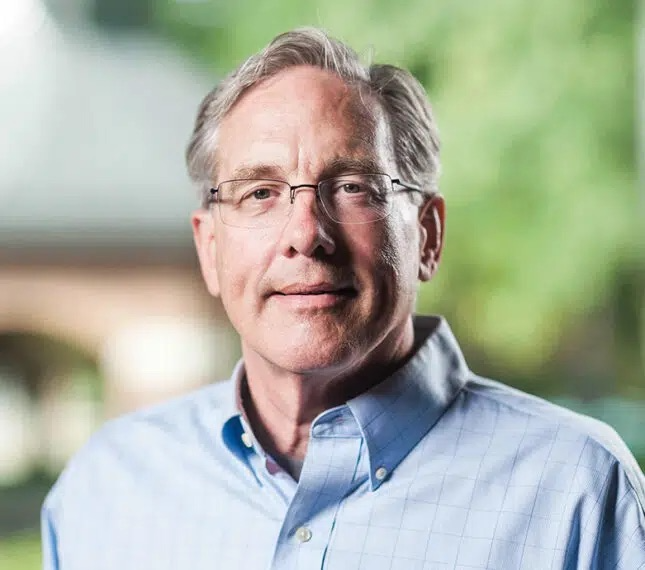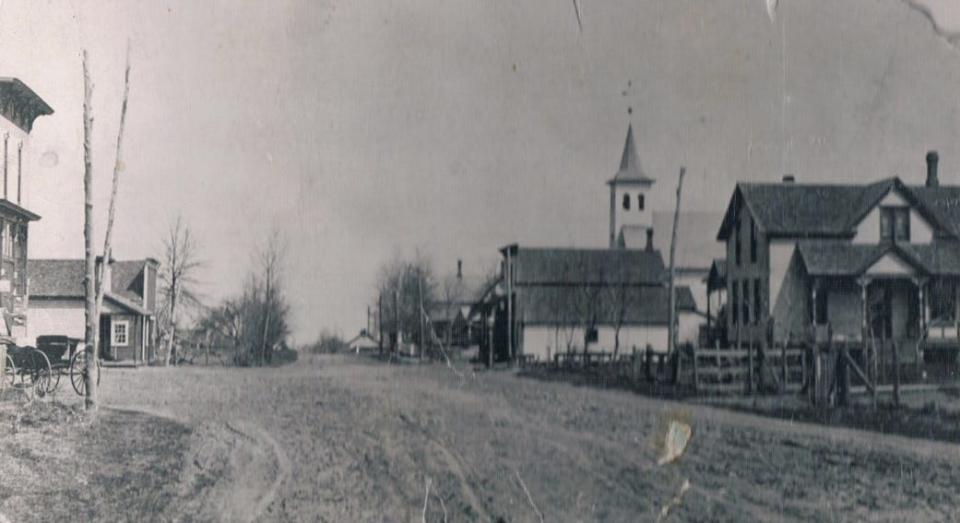Steve VanderVeen: The Klandermans and the beginning of Borculo

- Oops!Something went wrong.Please try again later.
This is the story of the Dutch pioneers who settled Borculo, and the Odawa (Ottawa) and Bodewadmi (Potawatomi) they met.
Jacobus Klanderman was born in Borculo, Province of Gelderland, in the Netherlands in 1815. He married Gesina Kistemaker. Together they had a son, Gerrit, born in 1839. Gesine died soon thereafter. In 1855, Jacobus married Aaltjen Reitman. Together they had three children: Johanna, Mary, and Derk.
In 1865, Jacobus and his family immigrated to America, arriving in New York City near the end of America’s Civil War and immediately after John Wilkes Booth had assassinated President Abraham Lincoln.
Three years earlier, Lincoln had signed the Homestead Act, which gave current and future citizens land, provided they lived on it and improved it. But where did this land come from? In West Michigan, the land between the Grand and St. Joseph Rivers west of present-day Jackson, Michigan, came from the Odawa (Ottawa), Ojibwe (Chippewa), and Bodewadmi (Potawatomi) peoples in accordance with the Treaty of Chicago in 1821.

Upon arriving in West Michigan, the Klandermans discovered their new home didn’t look like their old one. For one, the land was heavily wooded. The Klandermans chose high ground five miles north of Zeeland (at present-day 6091 96th Street), where they began clearing land for farming and built a log house.
For another, they didn’t have Dutch neighbors. Still, the Klandermans weren't the first white people to purchase property in the area; nor were they the only people living on the north side of Zeeland.
In 1836, John Ball, after arriving in Grand Rapids, explored the forests of Blendon for white pine before purchasing for himself and investors 2,500 wooded acres. To transport and sell the wood, he built a narrow-gauge track to the Grand River at Blendon Landing. Blendon Lumber Company began logging operations in 1854.
Meanwhile, half a mile north, a quarter mile east, and five miles to the southwest (present-day Noordeloos) were villages of Odawa and Potawatomi people.
Thus, when the Klandermans arrived, Derk, then six years old, began to play with his indigenous neighbors, and consequently learned their language. After several other Dutch settlers arrived — among them Kuyers, Broekhuis, Ten Cate, and Lamer — Gerrit opened a general store about half a mile south of the present-day Borculo village limit.
From the beginning, the Dutch settlers worshiped together. But they were also wary of their indigenous neighbors, who watched them from behind trees. Aaltjen, especially, felt called to save their souls. So, whenever Derk reported that one of their neighbors’ children was sick, Aaltjen would send him to their village with a pot of soup and the story of salvation, which he dutifully told.
Aaltjen also cried when she saw the children of her indigenous neighbors walking barefoot in the first snows of winter.
Subscribe: Get unlimited access to our local coverage
To get supplies for his store, Gerrit had to take an oxcart to Zeeland, a slow excursion, especially when traveling on “corduroy roads.” He would rather have walked, but walking could be dangerous. Rattlesnakes, mosquitoes, and even bears inhabited the swamp, and how much could he carry on foot?
At his store, Gerrit offered free tobacco to his customers, who would either fill their pipes to smoke or their mouths to chew. Those customers included the Odawa and Potawatomi, who appreciated the sharing of goods with the community.
Unfortunately, on a cold day in 1876, on his return from Zeeland with supplies for his grocery store, Gerrit experienced a drenching rainstorm. Before he could dry off, he contracted pneumonia. He died at 37, leaving behind a family of four, including a pregnant wife who gave birth on the day of his funeral.
Johanna and Mary secured jobs in Grand Rapids. Derk took over the family farm.
In 1882, the U.S gave Borculo its name and a post office. In 1883, 15 families organized a Christian Reformed Church. The lumber, land and financing for the building came from G. Moeke, who owned two sawmills at the time.
Information for this story comes from Cornelia Van Voorst’s (1975) “Village Lies North of Zeeland,” in a booklet entitled "Veneklasen Brick Homes" (1983). Information also comes from Bob Essenburg and Gerrit Bos, the great-grandson of Jacobus Klanderman. They share stories on borculo.weebly.com.
— Steve VanderVeen is a resident of Holland. You may reach him at skvveen@gmail.com. His book, "The Holland Area's First Entrepreneurs," is available at Reader’s World.
This article originally appeared on The Holland Sentinel: Holland History: The Klandermans and the beginning of Borculo

